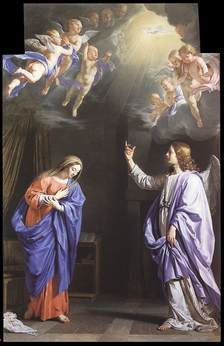The Missa Aurea

A glowing radiance surrounds the Mass of December 20th. During the Middle Ages, the Mass of the Missus Est — the first words of the Gospel of the Annunciation — on the Ember Wednesday of Advent was celebrated very solemnly as a kind of festival of the Blessed Virgin Mary. The stational church in Rome is the Basilica of Saint Mary Major; this choice signifies that today’s Mass is equal to that of the greatest feasts of the Mother God. It was called the Missa Aurea, the “Golden Mass.” In manuscripts of the Middle Ages, the capital letters of the text of the Annunciation Gospel were written in gold. The letters of gold were but a sign of the secret grace hidden within the words of the Angel Gabriel and within the response of the Virgin Mary.
Then too there is the tradition of celebrating today’s Mass in the glow of candlelight. The “Golden Mass” was especially popular throughout Europe where the faithful hastened to their churches before dawn, bearing lanterns, confident of obtaining on this day whatever special grace they asked through the intercession of the Virgin of the Annunciation.
The Gospel is sung today to a particular melody: the same ancient melody used to sing the Gospel of Pentecost. The Annunciation is the Proto-Pentecost. The Virgin Mother, overshadowed by the Holy Spirit, is the living image of the Church overshadowed by the Holy Spirit at Pentecost.
